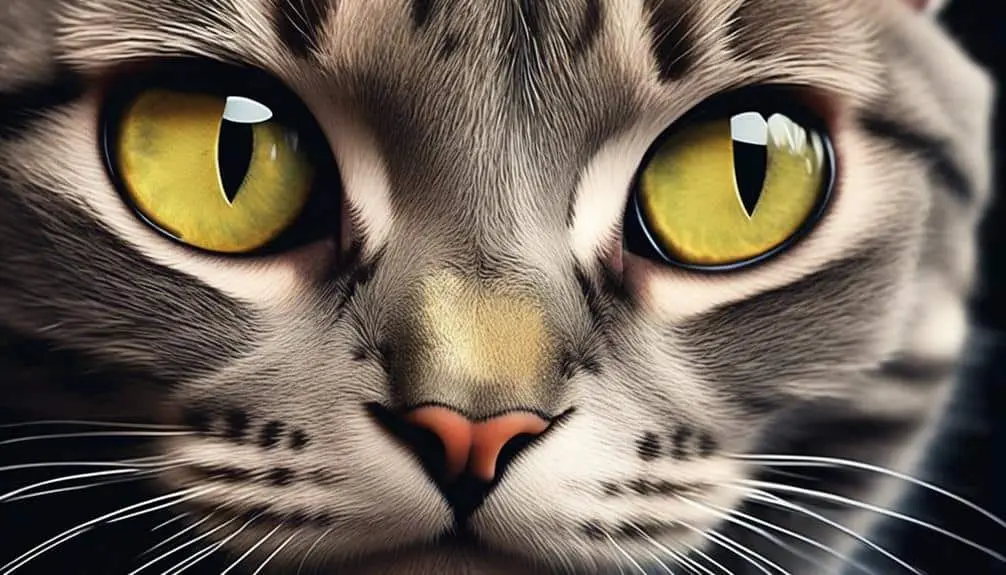The Best Fluffy Pancakes recipe you will fall in love with. Full of tips and tricks to help you make the best pancakes.

Have you ever wondered if there is a hidden meaning behind your cat's trilling? Perhaps you've heard various explanations, but are they really true?
In this article, we will explore the mysteries of cat trilling and uncover the truth behind this intriguing vocalization. Prepare to be amazed as we delve into the fascinating world of feline communication and unravel the secrets that your cat has been trying to tell you.
Get ready to gain a deeper understanding of your furry friend's unique language and discover the true meaning behind their trilling.
Key Takeaways
- Chirp, trill, and chirrup are different terms used to describe the same sound of cats.
- Trilling is a sound of happiness and contentment for cats, often used as a way of saying hello and expressing excitement.
- Trilling can also be a form of communication between cats or a way to attract a mate.
- Cats have vocal folds that allow them to produce trilling sounds, which are distinct from other cat vocalizations like meowing or chattering.
Defining Cat Trilling: Understanding the Sound
Understanding the sound of cat trilling is essential for cat owners to decipher their feline's communication cues.
Cat trilling, also known as chirping or chirruping, is a unique vocalization made by cats. It's a rolling warbling sound that's often associated with happiness and contentment.
However, variations in cat trilling sounds can occur due to different cat species and individual preferences. Some cats may produce short, high-pitched chirps, while others may create longer, melodic trills. These variations in sound can be influenced by factors such as the length of time the sound is held and the cat's vocal anatomy.
The Joyful Communication of Cat Trilling
Cat trilling is a delightful form of communication that brings joy to both cats and their owners. The science behind cat trilling lies in the mechanics of their vocal cords. Cats have vocal folds and an extra fold called ventricular cords that allow them to create different sounds, including trilling. Trilling occurs when cats push air through their vocal cords located within the voicebox. The unique sound of the trill is achieved by keeping the mouth completely closed or slightly open.
Trilling plays a significant role in strengthening the bond between cats and their owners. It's a vocalization of happiness and contentment, often used as a way of saying hello and expressing excitement. When cats trill, they're inviting interaction and communication. Responding to their trilling by engaging with them, talking to them, or petting them can further deepen the bond between cats and their owners.
Trilling as a Form of Feline Interaction
Trilling serves as a vital form of feline interaction, allowing cats to communicate their emotions and desires to their owners and other cats.
Cats use trilling as a means of communicating with humans, particularly when they want attention. When a cat trills, it's often a way of saying hello and expressing excitement. For example, when their owners come home, cats may trill as a way of greeting them.
Trilling can also be a form of communication between cats, serving as a conversation or a way to get attention. Additionally, cats may trill to ask questions or express confusion about their surroundings.
Unlocking the Mating Secrets of Cat Trilling
The vocalization of trilling in cats serves as a key component of their mating behavior, allowing them to communicate their availability and increase their chances of successful reproduction.
Trilling plays a vital role in cat communication and socialization, especially when it comes to attracting a mate. Female cats often use trilling as a way to signal their availability to male cats. By emitting this unique rolling warbling sound, female cats can convey their receptiveness and interest in mating.
Trilling not only serves as a means of reproductive communication between cats but also has an impact on cat-human bonding and interaction. When cats trill, it can be an invitation for humans to engage in social interaction, strengthening the bond between them.
Understanding the role of trilling in cat mating behavior can enhance our understanding of feline communication and improve our relationship with these fascinating creatures.
Differentiating Trilling From Other Cat Vocalizations
As we shift our focus to understanding the distinct vocalization of trilling in cats, it's important to differentiate it from other cat vocalizations in order to fully grasp its significance in feline communication and social behavior.
Trilling is a form of non-verbal communication that serves various purposes in cats' interactions with their environment and other cats. Unlike meowing, which is used primarily for communication with humans, trilling is a sound produced by cats to express happiness and contentment.
The science behind cat trilling involves the manipulation of vocal folds and ventricular cords to create a rolling warbling sound. It's important to note that trilling is different from chattering, which is directed at potential prey and expresses excitement and frustration.
Conclusion
In conclusion, the mysteries of cat trilling have been unlocked, revealing a fascinating world of feline communication.
Through scientific studies and expert insights, we've discovered that trilling is a joyful form of communication, used by cats to interact with their human companions and fellow felines.
Additionally, trilling plays a crucial role in attracting mates and ensuring the continuation of the species.
By understanding the unique language of cat trilling, we can deepen our connection with our four-legged friends and appreciate the complexity of their communication.








